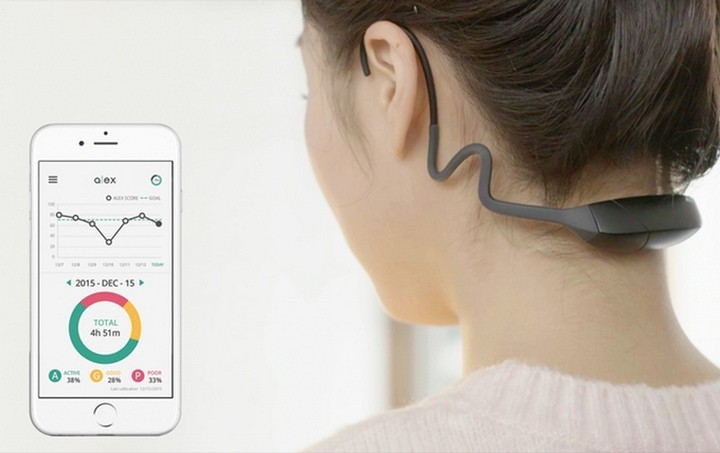No meio das inúmeras vantagens que as novas tecnologias trouxeram para a nossa vida, há uma desvantagem inevitável: a má postura corporal. São as costas curvadas na cadeira a usar o PC, é o pescoço dobrado o dia todo a olhar para o smartphone, horas seguidas sentado… tudo isso contribui para que o nosso corpo se ressinta e para que as dores e outros problemas mais graves surjam de forma prematura.
Mas, mais uma vez, é a tecnologia que nos pode ajudar a resolver este problema. Conheça o wearable ALEX.
ALEX é um novo wearable que promete alertar o utilizador cada vez que ele está com uma postura incorrecta, com o objectivo de minimizar as dores nas costas e pescoço.
O dispositivo é colocado no pescoço, assente nas orelhas, e vibra a cada vez que detecta uma má postura corporal, para que o utilizador se posicione de forma mais correcta.
Especificações Gerais
- Motor de vibração: Vibra sempre que os utilizadores estejam com uma má postura corporal
- Acelerómetro: Mede o ângulo do pescoço em tempo real e compila os dados para a aplicação móvel
- Bluetooth 4.0: Mantém a ligação do wearable ao dispositivo móvel do utilizador
- Memória flash: Grava de forma temporária os dados relativos à postura corporal do utilizador até serem sincronizados com a aplicação móvel
- LED de notificações: O LED indica se está ligado ou desligado, o estado da ligação Bluetooth e o estado da bateria.
Especificações Gerais
- Motor de vibração: Vibra sempre que os utilizadores estejam com uma má postura corporal
- Acelerómetro: Mede o ângulo do pescoço em tempo real e compila os dados para a aplicação móvel
- Bluetooth 4.0: Mantém a ligação do wearable ao dispositivo móvel do utilizador
- Memória flash: Grava de forma temporária os dados relativos à postura corporal do utilizador até serem sincronizados com a aplicação móvel
- LED de notificações: O LED indica se está ligado ou desligado, o estado da ligação Bluetooth e o estado da bateria.
Este wearable deverá chegar ao mercado já em Maio do presente ano, já que actualmente se encontra sujeito a uma campanha de financiamento colectivo através da plataforma KickStarter. O pack mais simples onde pode investir inclui um dispositivo wearable ALEX, um cabo USB/microUSB e uma bolsa de transporte, por 49 dólares.

